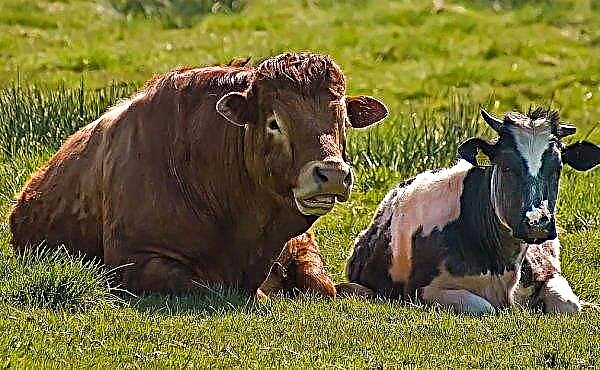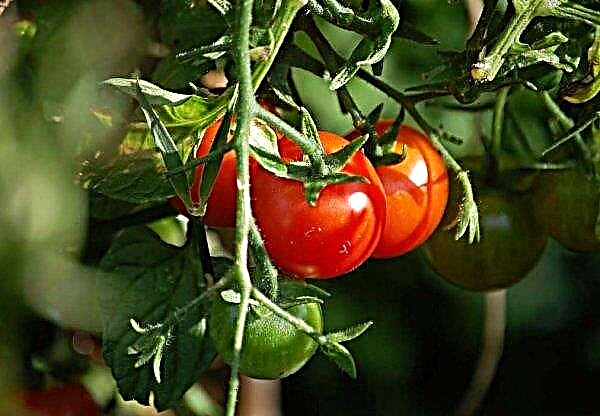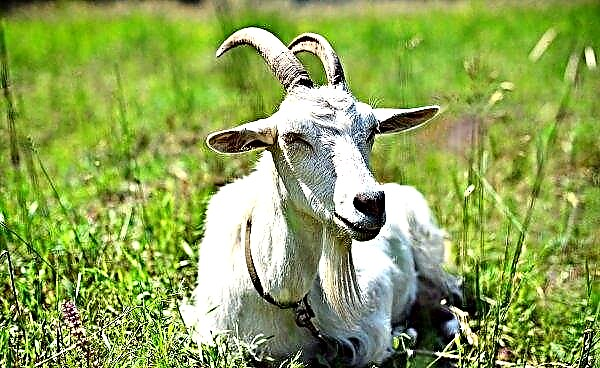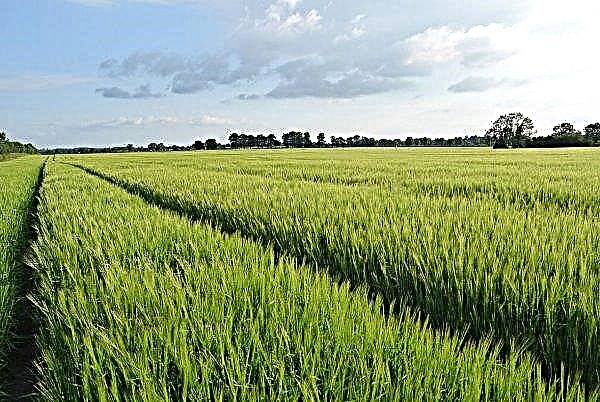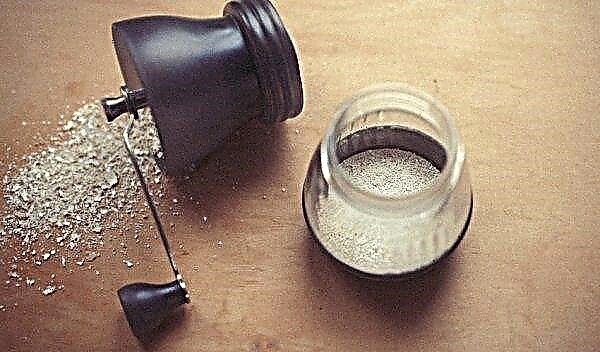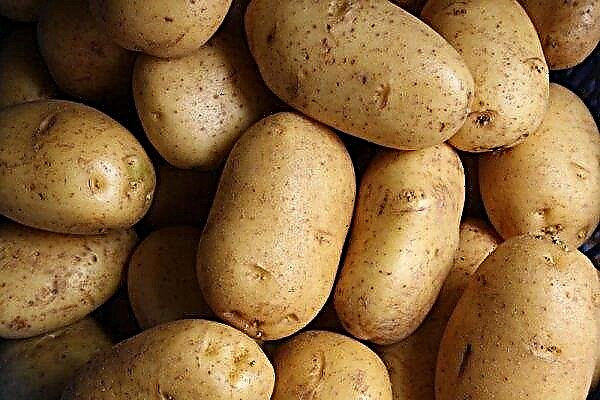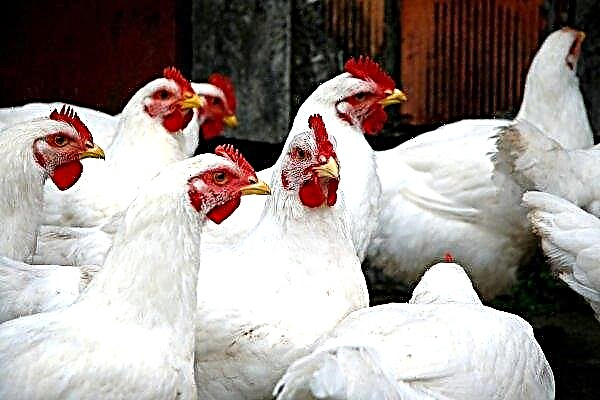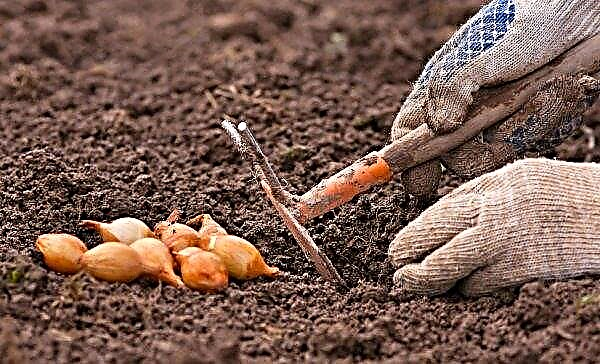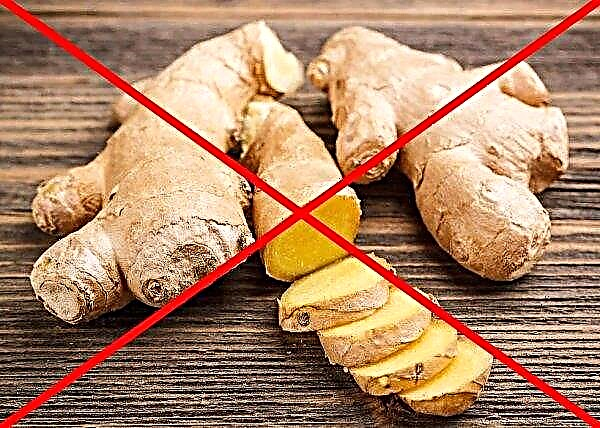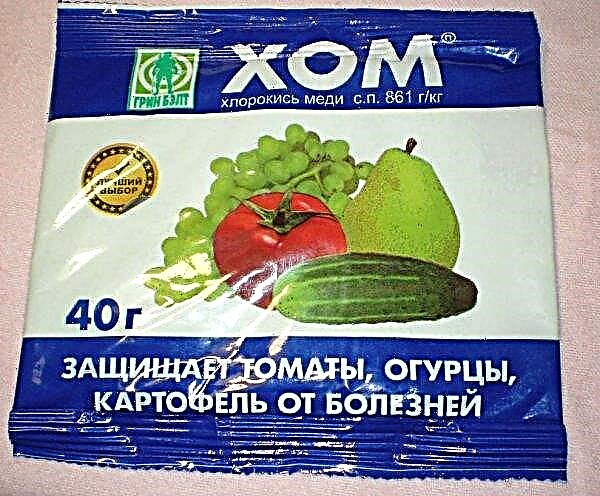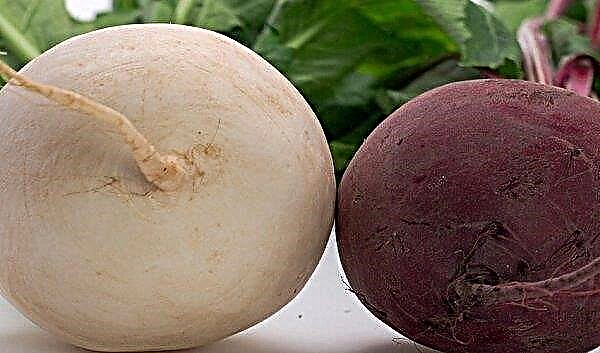Many summer residents in order to obtain a quality crop prefer the greenhouse method of growing pepper, for some it is the only possible way to grow a crop. About the best varieties of pepper for greenhouse cultivation, as well as about the features of caring for them - later in the article.
The best varieties of pepper for greenhouses and their description
Diabetes-resistant hybrids are considered the best varieties, while mostly sweet thick-walled peppers that are universal in application are chosen.
Did you know? Both bell pepper and dark chocolate contribute to the production of the hormone of happiness in the body. But if you take into account the caloric content of both products, then happiness with pepper is safer for the figure.
Atlant
Variety Atlant with an average maturity of 120–125 days. The bush is low, only 80 cm, which is ideal for simple film shelters. With proper care from 1 m², you can collect up to 20 kg of fruits. The hybrid variety, it perfectly resists the viral mosaic of solanaceous crops, is not afraid of temperature changes. The elongated fruit in the shape of a cone, ripening, blushes. The walls of the fruits are not too thick - 5 mm, weight - 150 g. The pulp is fragrant, sweet and juicy, pepper is consumed fresh and cooked for the winter.
Orange miracle
Hybrid - the fruit of the work of Dutch breeders, tall, ideally develops in polycarbonate greenhouses. About 110 days elapse from the first seedlings to the stage of technical ripeness. The fruits are saturated orange in color, grow more than 10 cm in length, weighing up to 230 g. The wall thickness of the Orange Miracle is about 8 mm. The pulp is sweet and juicy, the core contains 3-4 seed chambers. Crop yields up to 15 kg / m².
Cockatoo F1
The Kakadu salad salad is also successfully used in winter preservation. From the appearance of sprouts to ripening, 130–135 days pass. Pepper received an unusual name for the similarity of the shape of the fruit with the beak of a parrot. The bush is tall and sprawling, grows up to 1.5 m. Yield is stable - up to 3 kg per bush, and fruit weight - 150 g. The red vegetable is covered with glossy skin, walls are 8 mm thick. Peppercorns juicy, with a bright aroma. Sometimes on sale there are "brothers" of this variety, which differ only in the color of the fruits - they are not red, but yellow, and taste is not inferior to red in taste.
Pinocchio
A medium-sized bush about 1 m tall, sprawling, although weakly branched. The vegetable is large in size, about 12 cm, weight - 120 g, its walls are thin - only 4 mm. Variety Pinocchio early, ripens within 100 days.
Important! Pinocchio is prone to vertebral rot disease, so it is important not to overdo it with watering.
A fully ripe fruit of a bright red hue, from 1 m² they collect up to 13 kg. In greenhouses, the variety is grown in the north and northwest, and open ground is also suitable for the southern regions.
Swallow
A low bush of up to 60 cm in height can be grown under film shelter in low greenhouses. The early ripe variety ripens 106 days after germination. The mass of one fruit is an average of 100 g, the yield is up to 15 kg / m². The swallow is immune to fungal diseases and viruses, is transportable and suitable for food both fresh and in processing.
California Miracle
As the name implies, this is an American selection vegetable. It is low, up to 70 cm, medium early, matures within 110 days. The walls of the fruits are not thick - 5 mm, the pulp is juicy and very fragrant. This bell pepper bears fruit well (10 kg / m²), the weight of one fruit in the form of an elongated cube is 130 g. The California miracle variety is resistant to tobacco mosaic. It perfectly tolerates transportation, since its red skin is quite dense.
Hercules
The name pepper got for large (weighing 200 g) fruits, as well as for resistance to the main diseases of the culture. After the appearance of the first sprouts, 100 days pass before ripening. Fruits of red color, on average 12 cm in length, thick-walled (8 mm), have a square shape. It is consumed fresh and harvested for the winter (freezing, preservation). The productivity of Hercules is about 3 kg / m².
How to choose a good grade
When choosing a pepper variety, it is important to consider all the nuances that can affect its productivity.
Region
For successful crop cultivation, experienced summer residents select varieties in accordance with the climate in their region. For example, for the middle band, the stability of the seed material to temperature extremes, to return frosts is important. It has a temperate continental climate, which speaks of a moderately cold winter and long summer.
Did you know? Farmers from Israel have grown a huge fruit weighing 0.5 kg. Pepper jokingly nicknamed "Godzilla." The result is listed in the Guinness Book of Records.
This includes the Moscow region, Voronezh, Ivanovo, Nizhny Novgorod regions and others. As for Siberia and the Urals, the climate here is long, cold winters and short summers. Here it is preferable to grow hybrids that have strong immunity, winter-hardy and drought-resistant.
Growth conditions
When choosing a variety, you need to familiarize yourself with the requirements of the plant for the soil. Other conditions for growing it are important: lighting, temperature, rainfall in your area. Perhaps any variety is too whimsical in this matter and will require a lot of attention from the gardener, so it is better to choose the plant that, according to its requirements, most meets the capabilities of the vegetable grower.
Dimensions and height of the greenhouse
The room in which the tall variety will be grown should be at least 3 m high. This height is sufficient for the normal development of a tall bush, it will have enough space and, accordingly, oxygen, heat and lighting. Medium-sized and low-growing varieties are quite a small room, the main condition: to observe the distance between the bushes.
Important! The temperature in the greenhouse above + 30 ° C will lead to the sterility of pollen and the fall of fruit ovaries.
Ripening time
Such a criterion as the ripening period directly depends on the region of cultivation. For the north, it is better to purchase early ripe varieties, who have time to ripen during a short summer. For the south, the ripening period does not play a big role, but picking up vegetables with different dates, you can harvest all summer, and even autumn.
Variety or hybrid
Hybrids are valued for their resistance to major diseases and pests. These peppers are well resistant to return frosts, are resistant to drought and, in most cases, high-yielding. But hybrids do not transmit their qualities to seeds. These plants are planted for a year, and the next planting year they buy seeds again, so if you want to grow a culture from your own seeds, you need to purchase varietal specimens.
Technology for growing varieties of pepper in a greenhouse
Sowing seedlings is carried out from late February to the first decade of March. It is advisable to sow seeds in peat cups: the roots of the peppers are weak, do not tolerate picking. Before sowing, the material is calibrated and disinfected in a solution of potassium permanganate, then soaked for half an hour in Epin. Sprout seedlings at a temperature of + 25 ° C. 2 weeks before planting in the greenhouse, the sprouts harden, taking them to fresh air, gradually increasing the time of the "walk".
The soil before transplantation is disinfected and fertilized, introducing humus and mineral fertilizers. Transplant dates are the end of April for the south and the middle zone, the end of May for the north of the country. Seedlings are planted in the prepared soil at a distance of 30–40 cm, between the rows 50–70 cm are left. The distance depends on the height and spreading of the bush.
Climatic conditions and care procedures:
- The temperature for growing seedlings is maintained during the day in the range +20 ... + 26 ° С, at night - + 13 ° С.
- Optimum humidity is maintained at 65% for air, 80% for soil.
- Watering is carried out 3 times a week, reducing the frequency to 2 times a week during flowering and fruiting. Water should be warm, at room temperature, up to 1 liter of liquid per 1 bush.
- Fertilizing is carried out at least 2 times a month, alternating organics and mineral complexes.
- A bush is formed into 2 stems, diving, leaving about 15–20 ovaries per bush.
- For tall plants set trellis support, for low varieties you can make an individual support. They are tied with twine gently, with a free loop, so as not to damage the bush.
- After watering, the planting is mulched, this avoids the procedure of loosening.
- For the prevention of diseases, preventive spraying is carried out with the biological preparation "Fitosporin-M", according to the instructions.
Harvest dates and features
In greenhouses without heating, you can grow a crop until late autumn; in heated rooms, juicy vegetables are harvested year-round. Early crops ripen within 80–90 days, later crops 120–140 days. For long-term storage, vegetables are cut with fruit stalk, in the stage of technical ripeness. The shelf life of such fruits will increase to 60 days. Peppers for immediate fresh use or for winter harvesting are harvested fully mature. Growing pepper in a greenhouse has a significant advantage over open ground. In this case, the grower can affect the microclimate, creating the best for plants. And choosing a variety suitable for yourself is not so difficult.
Peppers for immediate fresh use or for winter harvesting are harvested fully mature. Growing pepper in a greenhouse has a significant advantage over open ground. In this case, the grower can affect the microclimate, creating the best for plants. And choosing a variety suitable for yourself is not so difficult.

